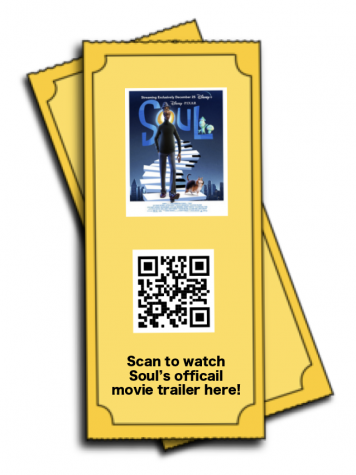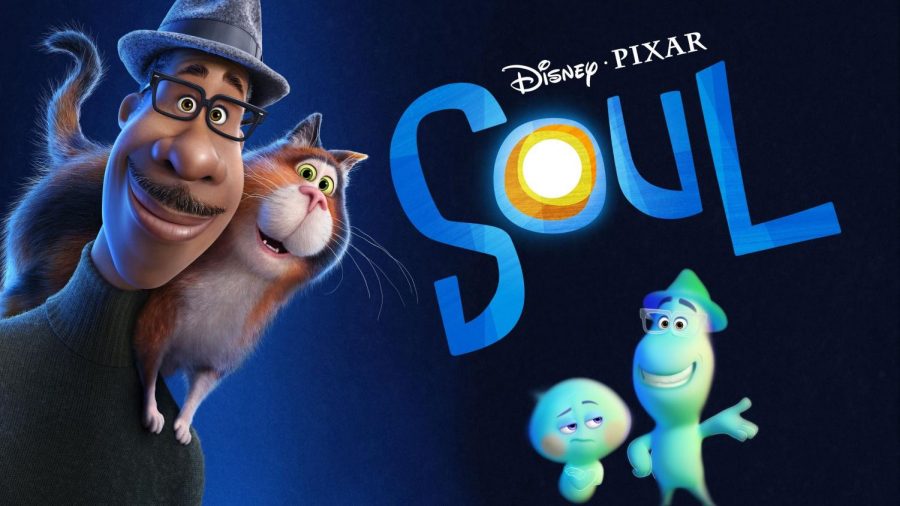Pixar’s Borderline Descartes-equi ‘Soul’ Speaks to Society
Is this metaphysical musical narrative another white-savior movie?
Besides probing out your brains trying to reconcile your Freudian repressed existential questions, through the limited language of animation, Peter Hans Docter’s Soul speaks directly to our society. In a deeply gorgeous, somewhat hilarious, yet heart-wrenching 100 minutes, Soul warns of taking ambition or superficial success too seriously. And it represents some of the warranted work to be done to do greater justice to Black characters, in reconciling a Black man’s experience to focus solely on his dreams and desires.
The narrative begins with a near-death experience, where Joe Gardner (Jamie Foxx) gets stuck in the afterlife and contemplates his life choices after meeting 22 (Tiny Fey). As he struggles with his dreams and ambitions of performing jazz music professionally, he eventually comes to terms with the moments in life he took for granted.
Set in Pixar’s version of NYC and the afterlife called “The Great Beyond,” there are definitely parallels to the world-building and plot of Docter’s previous acclaimed masterpiece Inside Out.
When Joe “dies” after finally getting the lifetime opportunity to play jazz with his idol, the world-renowned jazz legend Dorothea Williams (Angela Bassett), he suddenly turns into some squishy Flintstone resembling green blob. Soon after, there’s the classic overdone switcheroo plot twist, which kicks off the adventure set in “The Great Beyond” to get back to present-day NYC. Except, this time, it’s the fact that Joe has now merged bodies with 22, a wispy blue rebellious creature, to find his “self-actualization.”
While there were certainly creative narrative twists, I couldn’t help but notice—is Soul yet another white savior movie? A bit of a pattern with depictions of Black characters as creatures? And, I have to wonder who thought it was a good idea to put a white woman in the body of a Black man?
 Not to mention later, when the antagonist Terry (Rachel House), who has a duty to fulfill lost souls on Earth, mistakes Gardner for another Black man—only reinforcing a common microaggression. I have to criticize Pixar for the dangerous narrative tropes that millions of children may grow up watching, although it’s not saying there weren’t any strengths about Soul.
Not to mention later, when the antagonist Terry (Rachel House), who has a duty to fulfill lost souls on Earth, mistakes Gardner for another Black man—only reinforcing a common microaggression. I have to criticize Pixar for the dangerous narrative tropes that millions of children may grow up watching, although it’s not saying there weren’t any strengths about Soul.
For instance, the gorgeously curated scenes overlaying 2D with 3D animation are innovative approaches to Pixar’s newest animations. The cinematography captures perfectly what it feels like to “get lost in the zone”—a place that artists, musicians, and writers may resonate with most deeply. While for Gardner, it’s playing piano and jazz on a grand stage, for others, it can be any passion where everything else just fades away, and you’re immersed in your own bubble.
Soul is definitely one of many movies that have made me want to move to NYC, although Gardner’s failures as a professional jazz musician have reminded me to think twice before moving there. Perhaps, it’s the fear of facing the daily trials and tribulations of the often romanticized version of “making it in NYC.”
But then again, that’s exactly what the core of Soul’s delicate yet heavily philosophical borderline descartes-equi theme touches on. You know life isn’t about careers, passions, or achievements—cherish living, right this second, exactly where you are. In the end, Soul celebrates cultivating happiness and finding purpose in the present moment: perhaps a lesson that 2020 has challenged all of humanity on.
Soul showed me how the brusque urbanist NYC traffic that’s almost a touch cliché is one of a collective youth of hope, inspiration, and energy. A sensory riot—squalling yellow taxis, clattering subways, bodega bagels, foldable street pizza, gossiping barbershops, and the never-ending hustles of citizens—all belonging to a city that never sleeps.
Or perhaps, Soul’s greatest lesson might be best represented by that beautiful and natural aesthetic of a montage delivering the “little moments” in life. From the almost spiritual way, the sun falls across a block of neighborhood houses, how it’s reflected off of ripe leaves about to burst into fall colors as the seasons change, to the feeling of your toes in the sand or that melt-in-your-mouth-sensation taking a bite of your favorite pie.
Now, would I watch Soul on Christmas morning with my whole family? Well, if you’re ready to reflect on your life and have some long conversations about death, purpose, and a little bit of white-privilege afterward, then yes.



